Cenospheres-Reinforced PA-12 Composite: Preparation, Physicochemical Properties, and Soaking Tests
- PMID: 35745908
- PMCID: PMC9229177
- DOI: 10.3390/polym14122332
Cenospheres-Reinforced PA-12 Composite: Preparation, Physicochemical Properties, and Soaking Tests
Abstract
The main aim of this research was the preparation of a polymer-ceramic composite with PA-12 as the polymer matrix and modified aluminosilicate cenospheres (CSs) as the ceramic filler. The CSs were subjected to an early purification and cleaning process, which was also taken as a second objective. The CSs were surface modified by a two-step process: (1) etching in Piranha solution and (2) silanization in 3-aminopropyltriethoxysilane. The composite was made for 3D printing by FDM. Raw and modified CSs and a composite with PA-12 were subjected to the following tests: surface development including pores (BET), real density (HP), chemical composition and morphology (SEM/EDS, FTIR), grain analysis (PSD), phase composition (XRD), hardness (HV), and static tensile tests. The composites were subjected to soaking under simulated body fluid (SBF) conditions in artificial saliva for 14, 21, and 29 days. Compared to pure PA-12, PA-12_CS had generally better mechanical properties and was more resistant to SBF at elevated temperatures and soaking times. These results showed this material has potential for use in biomedical applications. These results also showed the necessity of developing a kinetic aging model for aging in different liquids to verify the true value of this material.
Keywords: APTES; Piranha solution; cenospheres; composites; polyamide PA-12; surface modification.
Conflict of interest statement
The authors declare no conflict of interest.
Figures
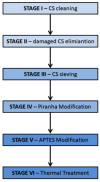

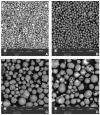

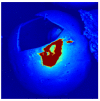








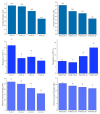
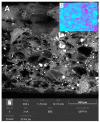
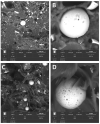
Similar articles
-
PA-12-Zirconia-Alumina-Cenospheres 3D Printed Composites: Accelerated Ageing and Role of the Sterilisation Process for Physicochemical Properties.Polymers (Basel). 2022 Aug 2;14(15):3152. doi: 10.3390/polym14153152. Polymers (Basel). 2022. PMID: 35956670 Free PMC article.
-
Alumina and Zirconia-Reinforced Polyamide PA-12 Composites for Biomedical Additive Manufacturing.Materials (Basel). 2021 Oct 19;14(20):6201. doi: 10.3390/ma14206201. Materials (Basel). 2021. PMID: 34683792 Free PMC article.
-
Effect of Calcination Temperature on the Phase Composition, Morphology, and Thermal Properties of ZrO2 and Al2O3 Modified with APTES (3-aminopropyltriethoxysilane).Materials (Basel). 2021 Nov 4;14(21):6651. doi: 10.3390/ma14216651. Materials (Basel). 2021. PMID: 34772179 Free PMC article.
-
Polyamide 11 Composites Reinforced with Diatomite Biofiller-Mechanical, Rheological and Crystallization Properties.Polymers (Basel). 2023 Mar 21;15(6):1563. doi: 10.3390/polym15061563. Polymers (Basel). 2023. PMID: 36987343 Free PMC article.
-
3D Printing of Fiber-Reinforced Plastic Composites Using Fused Deposition Modeling: A Status Review.Materials (Basel). 2021 Aug 12;14(16):4520. doi: 10.3390/ma14164520. Materials (Basel). 2021. PMID: 34443044 Free PMC article. Review.
Cited by
-
PA-12-Zirconia-Alumina-Cenospheres 3D Printed Composites: Accelerated Ageing and Role of the Sterilisation Process for Physicochemical Properties.Polymers (Basel). 2022 Aug 2;14(15):3152. doi: 10.3390/polym14153152. Polymers (Basel). 2022. PMID: 35956670 Free PMC article.
References
-
- Guo Z., Poot A.A., Grijpma D.W. Advanced polymer-based composites and structures for biomedical applications. Eur. Polym. J. 2021;149:110388. doi: 10.1016/j.eurpolymj.2021.110388. - DOI
-
- Pugliese R., Beltrami B., Regondi S., Lunetta C. Polymeric biomaterials for 3D printing in medicine: An overview. Ann. 3D Print. Med. 2021;2:100011. doi: 10.1016/j.stlm.2021.100011. - DOI
-
- Shirvan A.R., Nouri A., Wen C. 12-Structural polymer biomaterials, Structural Biomaterials: Properties. Chacteristics Sel. Woodhead Publ. Ser. Biomater. 2021:395–439.
Grants and funding
LinkOut - more resources
Full Text Sources
Research Materials
Miscellaneous

